Feb
18
2013
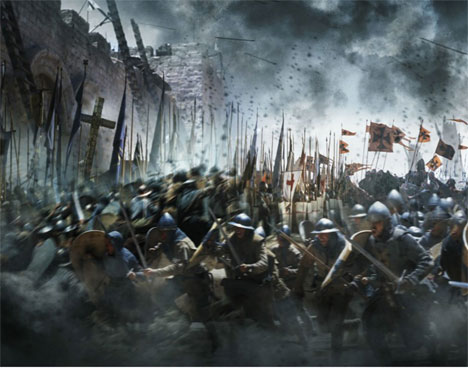 or What Was A Nazirite?
or What Was A Nazirite?
“A defiled Nazirite is an Adam or an Eve who has failed at holy war and thus cannot enter into God’s rest.”
Since I rave on about structure so much (and how wrong it is that we moderns regard it as merely an ornamental option rather than as the label on the tin) the fractalicious* Covenant structure of Numbers 6 should give us some clues as to what the Nazirite vow actually was in the big picture.
Continue reading
2 comments | tags: Baptism, Literary Structure, Nazirite, Numbers, Numbers 6 | posted in Bible Matrix, Biblical Theology, The Last Days
Sep
1
2012
Bulls and Basins
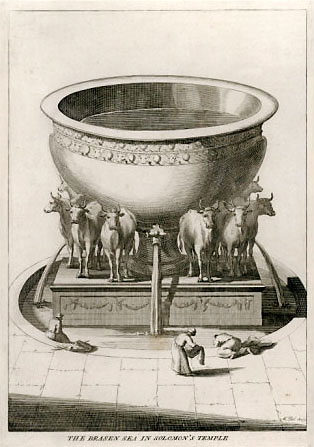
“You are beautiful as Tirzah, my love, lovely as Jerusalem, awesome as an army with banners.” (Songs 6:4)
An online friend recently questioned the repetition found in Numbers 7. The offerings of each tribe are identical, yet each is listed in full. Surely, this was a waste of expensive parchment? Architecture is important to God, no less literary architecture, and it seems to me that the “fullness” of the Offertory in chapter 7 is the result—or the liturgical response, to the military “forming” of Israel in chapter 2.
Continue reading
Comments Off | tags: Covenant curse, Covenant Theology, Laver, Literary Structure, Nazirite, Numbers, Numbers 5, Tabernacle | posted in Bible Matrix, Biblical Theology
Dec
14
2010
or God is a Foodie
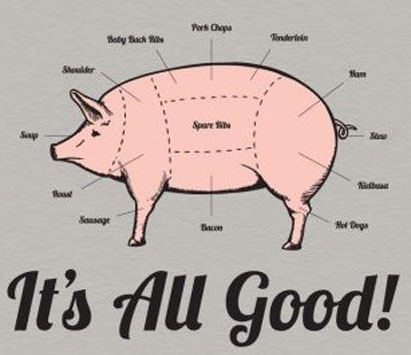
The Mosaic dietary laws were temporary. Just as a Nazirite made a temporary vow for the purpose of sanctification for holy war, so Israel’s purpose as a nation of holy warriors included certain abstinences prescribed by God. Once the war was over, the prohibitions were removed. “Bridal food” (the Feast of Tabernacles) was back on the menu in the first century.
The Nazirite vow was a symbolic form of death and resurrection, of the bridegroom going into the grave (short hair), slaying the serpents, and emerging from the chamber with His bride (long hair), whom He then presented to the Father. [1] The prohibition on the Tree of Knowledge was a temporary one. It began Adam’s holy war, but he broke the vow, failed to rescue the bride and was expelled from the Lord’s table. [2]
Continue reading
11 comments | tags: Communion, Fasting, Food laws, Genesis, Jacob, James Jordan, Leviticus, Nazirite, Robert Farrar Capon, Typology | posted in Biblical Theology, Christian Life, Quotes
Dec
1
2010
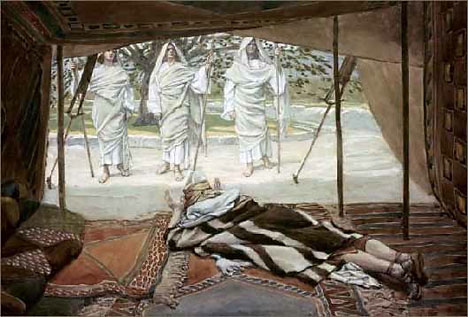
“…of the angels He says:
‘Who makes His angels spirits
and His ministers a flame of fire.’”
God is the source of all things, and He identifies Himself as such in His speeches. Every speech is Covenantal, and every preamble within His speeches is a statement of transcendence. “I am the Lord your God.”
After the initial call comes delegation, Covenantal Hierarchy. A man, a Moses, an Abraham, receives the Word with meekness.
We know that angels are God’s messengers, the sent ones. They administered the Old Covenant as our tutors, Satan becoming the first false teacher, the first corrupt ambassador, or, if you will, the first publican.
[This post has been refined and included in Sweet Counsel: Essays to Brighten the Eyes.]
Continue reading
5 comments | tags: Abraham, Angels, Covenant Theology, Creation Week, Daniel, Genesis, Judges, Leviticus, Nazirite, Nebuchadnezzar, Resurrection, Revelation, Samson, Sodom | posted in Bible Matrix, Biblical Theology, The Last Days
Jul
9
2010
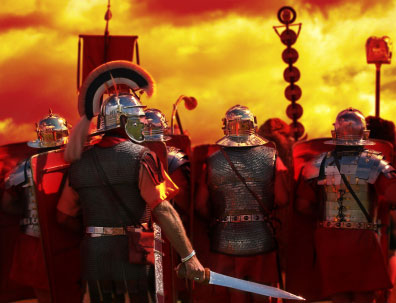
Michael F. Bird recently wrote:
The Jerusalem council achieved a via media by finding in Scripture a justification for the inclusion of Gentiles within the church without requiring circumcision and placing upon Gentiles only the obligation to avoid idol food and sexual immorality. Yet the Jerusalem council also permitted the existence of two parallel theologies: one theology where the Gentiles were uncircumcised equals in a renewed Israel with holiness constituted by the Spirit and another theology where uncircumcised Gentiles were guests in an Israelite remnant that still defined holiness through Torah observance. The Jerusalem council’s decisions seem optimized in a setting where Jewish Christians and Gentile Christians remain in parallel rather than integrated, especially in relation to shared meals. The council did not stipulate the standard of law observance to be upheld for Eucharistic fellowship to ensue.
Bird makes some interesting observations in his post, but two parallel theologies? Is that really what was going on? And does the council’s decision apply to modern observance of the Torah (ie. Messianic Jews)?
Continue reading
Comments Off | tags: AD70, James, Nazirite, Paul, Replacement Theology, Revelation, Tabernacle of David, Tabernacles, Temple | posted in Biblical Theology
Feb
4
2010
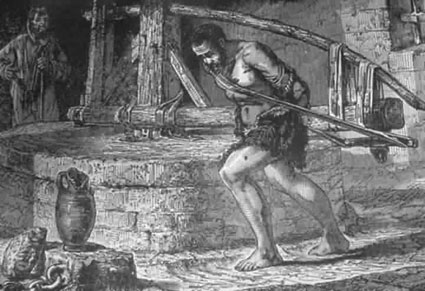
On Day 3 we have grain and fruit plants. They are the promise of bread and wine at God’s Sabbath table on Day 7.
The third elected judge was Deborah. Her song calls for a warrior like the sun. The seventh elected judge was Samson, “Sunrise.”
Continue reading
Comments Off | tags: Creation Week, Deborah, Judges, Nazirite, Samson, Temple | posted in Biblical Theology, The Last Days
Nov
27
2009

or New Covenant Stunt Double
Doug Wilson wrote something recently to correct our misunderstanding of Jesus’ temptation in the wilderness:
When our Lord was tempted by the devil in the wilderness, He answered with Scripture, as we all know. Three times He was tested, and each time He replied in the words of Deuteronomy. But this is sometimes misunderstood. We tend to think that Jesus was quoting Scripture at the devil, as though the devil ought to start obeying it. But this was not His intent. When the Lord cited the words of Moses, each time it was because He would have been disobeying the text of Scripture if He had followed the suggestion of the tempter.
Continue reading
Comments Off | tags: Achan, Joshua, Nazirite, Peter Leithart, Tabernacle, Table of Showbread | posted in Biblical Theology, The Restoration Era
Sep
8
2009

Matthew 1-10 follows the Dominion pattern. After Jesus’ testing in the wilderness, in 4:18-8:13 Jesus called His disciples and began mustering a new holy army – the “next generation”.[1] It was reported to Him that the last Old Covenant Nazirite (holy warrior) was dead. It was time for new warriors. Jesus healed the uncleanness of many, creating a new priesthood. His success in the wilderness as a new Head made possible this new body. Peter Leithart writes:
Continue reading
Comments Off | tags: Atonement, Bible Matrix, Demons, Dominion, High Priest, John the Baptist, Leviticus, Nazirite, Peter Leithart, Totus Christus | posted in Biblical Theology, Totus Christus
Jul
17
2009
or Global Warning
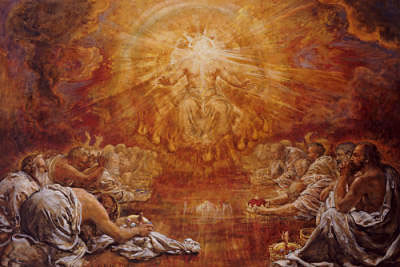
An important tenet of James Jordan’s interpretation of the Revelation is that it shows the Old Covenant angelic government vacating the premises and a human government moving in as a new administration – in AD70. This sounds strange to our ears, but I have found that it does play out in many ways, which it should if it is the correct interpretation.
Now, this handover of heavenly government was a gradual process in the first century, but consummated at the marriage feast of the Lamb. But its outworking in history is gradual. Interesting stuff. Here’s some thoughts.
Continue reading
Comments Off | tags: AD70, Angels, Demons, Nazirite, Peter Leithart, Revelation | posted in Against Hyperpreterism, Biblical Theology, Quotes, The Last Days
May
7
2009

The Nazirite Vow
(Article requested by Drew J.)
This vow in Numbers 6 follows the “inspection of jealousy” in Numbers 5. Mark Horne observed that, just as the woman in Numbers 5 was to be inspected for harlotry with her hair untamed, so the Nazirite (whether male or female) was not to cut his or her hair. A Nazirite is a human picture of the church as a warrior bride. Hair is glory. Hair is the cloud of angels (and now, saints) surrounding the throne of God.
“Therefore the woman ought to have a symbol of authority on her head, because of the angels.” (1 Cor. 11:10)
A woman is the glory of her man. A woman’s hair is a symbol of submission, but also a symbol of her own “cloud of angels” – her godly offspring (See Ezekiel 5 for the children of Israel symbolised as the prophet’s hair, Micah 1:16, Matthew 10:30 and also my comments on Nehemiah and his hair-pulling). In battle, a Nazirite was like a blazing torch (the Ark-chariot/Adam) and smoking firepot (the smoke clouds of the incense altar/Eve army), parting his enemies like the pillar of God.
The hair is her “crop”, the twelve stars around her head (Rev. 12), and the question constantly posed to Israel concerns her role as God’s mediatorial Land. Is her crop one of thorns and thistles, or is it godly grain? This is also the question in Numbers 5, and the Lord put Israel to this exact test after the idolatry with the golden calf. The “harlots” were slain with the Levitical sword.
Continue reading
3 comments | tags: Adam, David, James Jordan, John the Baptist, Judges, Nazirite, Numbers 5, Numbers 6, Obed, Paul, Revelation, Samson, Samuel, serpent, Showbread, Tabernacle, Uriah, Wisdom | posted in Against Hyperpreterism, Biblical Theology
 or What Was A Nazirite?
or What Was A Nazirite?

































